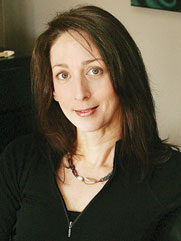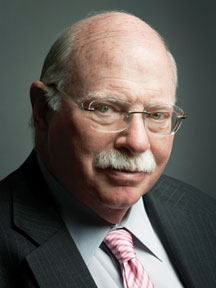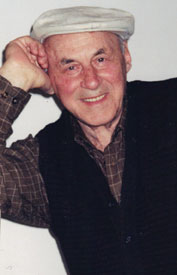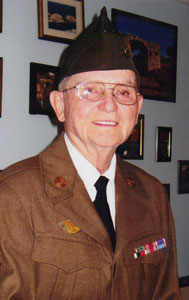Israel’s peace quest 45 years after Six-Day War
 This week marks the 45th anniversary of the Six-Day War, the seismic event that has shaped the subsequent history of the Arab-Israeli conflict. (The first day of fighting was June 5, 1967) The war’s immediate results, Israel’s quick defeat of three Arab armies and its U.N.planned takeover of territories with large concentrations of Palestinian Arabs, raised issues that are still unresolved today.
This week marks the 45th anniversary of the Six-Day War, the seismic event that has shaped the subsequent history of the Arab-Israeli conflict. (The first day of fighting was June 5, 1967) The war’s immediate results, Israel’s quick defeat of three Arab armies and its U.N.planned takeover of territories with large concentrations of Palestinian Arabs, raised issues that are still unresolved today.
Over the decades a widespread misconception has developed that an expansionist Israel “occupied” Palestine in 1967, and that an end to that occupation will bring a just peace to the region. However, what actually happened 45 years ago is entirely different.
In 1967, there was no Palestinian state. The Arab world had rejected two decades earlier the U.N.’s two-state solution to create an Arab state alongside a Jewish state. Indeed, Arab leaders could have created a Palestinian state in the West Bank and Gaza between 1948 and 1967. Neither, in 1967, were there any “settlements” that today provoke the ire of Israel’s enemies, other than tiny Israel itself, 9 miles wide at its narrowest point.
The West Bank and East Jerusalem were in Jordanian hands in 1967, and Jews were denied access to their holy places in violation of solemn international agreements. The Gaza Strip was under harsh Egyptian military control. The Golan Heights, held by Syria, were used to shell Israeli farming communities.
And the 1967 lines separating Israel from its neighbors, often called the Green Line, were not formal boundaries but rather armistice lines indicating where the armies stood in 1949, after the new State of Israel fought off the five Arab armies that sought to strangle it at birth.
In the weeks leading up to June 1967, Egyptian President Gamal Abdel Nasser announced a blockade of Israeli shipping in the Straits of Tiran, which provided Israel’s only maritime access to trading routes with Asia and Africa. The blockade alone was an act of war. He also demanded that the U.N. remove its peacekeeping forces from the Sinai. Shamefully, the U.N. complied, leaving no buffer between the mobilizing Egyptian army and Israel.
Nasser and his Syrian allies publicly announced to their own people and to the world that the coming war would bring Israel’s annihilation. “The existence of Israel has continued too long,” proclaimed Radio Cairo on May 16. “The battle has come in which we shall destroy Israel.” Twenty-two years after the Holocaust, another enemy contemplated the destruction of the Jews.
After Israeli pleas for international help in challenging the blockade went unanswered, its leaders felt compelled to launch a preemptive attack before Egypt could get its planes in the air. Despite Israel’s clearly expressed pleas to Jordan’s King Hussein to stay out of the conflict, the king tied his country’s fate to Egypt and Syria. Thus, the war’s end found not only Gaza, Sinai and the Golan under Israeli control, but the West Bank and East Jerusalem as well.
Perhaps naively, the Israelis believed they could barter their newly acquired territories in return for peace. But even dramatic defeat could not persuade the Arab world to accept the reality of a Jewish state. The Arab Summit Conference in Khartoum on Sept.1, 1967, resolved “No peace, no recognition, no negotiations” with Israel.
To be sure, in later years Egypt and Jordan bowed to the inevitable and negotiated with Israel, resulting in peace agreements. Israel has shown its readiness for territorial compromise in exchange for guarantees of peace by relinquishing the Sinai and then Gaza. And it remains ready to negotiate with the Palestinian leadership, which, sadly, avoids face-to-face talks and refuses to even acknowledge Jewish historical ties to the land.
Those who seek to rewrite history suggest that there was a “Palestine” occupied by Israel. There was not. They further assume that Israel violated international borders in 1967. There were no borders, only armistice lines. They claim Israel was the aggressor but, in fact, it acted in self-defense and fought off the Arab aggressors. They consider Israeli settlements the cause of the conflict, even though there were no settlements before 1967. The conflict was, and remains, rooted in the refusal to countenance a Jewish state, whatever its size, in the Middle East.
As politicians, diplomats and journalists continue to grapple with the consequences of the Six-Day War, a clear picture of the dramatic events of that time is essential for moving toward a resolution of the conflict.
Marvin Szneler is the executive director of the Jewish Community Relations Bureau|American Jewish Committee.



 Last week I addressed the Annual Meeting of the Jewish Community Center to talk about a new collaborative “Jewish Life and Learning” program between Federation and the Jewish Community Center. I would like to share these remarks with you so you can understand what we are doing as well. I believe it is a model for other communities to emulate.
Last week I addressed the Annual Meeting of the Jewish Community Center to talk about a new collaborative “Jewish Life and Learning” program between Federation and the Jewish Community Center. I would like to share these remarks with you so you can understand what we are doing as well. I believe it is a model for other communities to emulate.


